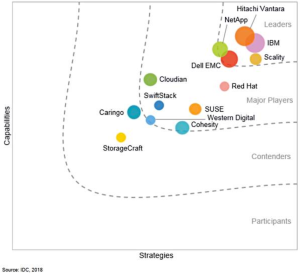What are the odds that you find the right storage system to run all the workloads that need to be running and to forever sustain all the apps that consume storage? Given the current state of the art, what would be your chances of doing so today?
Apart from being existential, the question also appears to be formalizable. Meaning that it can be approached with a certain degree of scientific rigor and scrupulousness. Of course, I’m talking about the Drake equation.
The Drake equation is a probabilistic argument used to estimate the number of active, communicative extraterrestrial civilizations in the Milky Way galaxy. Since its 1961 publication, and notwithstanding constructive criticism (see, for instance, “The Drake Equation Is Broken; Here’s How To Fix It“) the equation proved to be usable across wide range of application domains.
Perhaps the most popular application of Drake is estimating one’s chances to find true love (variations: girlfriend, boyfriend, soulmate, BFF).
Given a massive body of work on the subject I’ll have to limit citations to maybe just one: the 2008 paper “Why I don’t have a girlfriend” where Peter Backus clearly and succinctly explains a) how to apply Drake, and b) why at the time of the writing he didn’t have a girlfriend.
Back to storage systems though – equipped with Drake’s methodology, the question of finding the one and only storage system can be factorized (step 1), with the probabilities of each factor estimated (step 2), and fed into the equation (step 3) to generate an estimate. Consider a real-life example, whereby the storage system in question features:
- SDS: software stack on commodity x86 servers
- Price $0.10/GB or below that covers hardware + software + 5 years of support
- Petascale clustering with 1PB usable today and growing to 100PB later in 2019
- Storage media: hard drives
- Linearity: must scale close to linear with each added node and each added spindle
- HA: must be highly available
- Tiering: unlimited
- Data redundancy: both local (RAID1/5/6/10) and replicated
- AI: built-in accelerations for AI workloads
A quick look at the above reveals the truth: the chance of locating a match is probably low.
Indeed, at the time of this writing, the Wikipedia’s computer storage category includes a total of about 150 companies. Even if we super-generously give each of the 9 factors an average 0.5 probability, the resulting (150 * 1/512) can only be interpreted as: oops, doesn’t exist.
There are numerous ways to confirm the first suspicion. For instance, given the limited dataset of 150, we could run Monte Carlo simulations by randomly selecting storage companies and filling-in samples, e.g.:
| Storage company X.Y.Z. | SDS: No | Petascale: No | Price: Not cheap | Commodity x86: No | HA: Yes |
Having accumulated enough samples to generate confidence intervals, we then compute the odds, find them depressingly low, and resort to finding some peace in the pure logic of this exercise, a consolation similar to the one Peter Backus found years ago.
We could also take a more conventional route which (conventionally) entails: reviewing datasheets, meeting with vendors, gathering references, reading Top-N IDC and Gartner reports, and then again reviewing the product datasheets. Here, for instance, are the top 13 companies from the IDC Worldwide Object Storage 2018 – we could take this report and painstakingly fill-in a 13-by-9 comparison table with those companies in the rows and the distinguishing characteristics in the columns (I will leave this as an exercise for the reader).

Source: The Register
Most likely, though, if nothing even remotely plausible comes up on the first day or two of screening, referencing, and filling out comparison tables, the chance (of finding the right storage system) must be considered extremely slim. The storage system that you need, seek, and depend upon may not exist.
Or, stated differently, the storage system that you really need may really not exist.
It’ll be hard to come to terms with this statement – the process will usually take anywhere between three to nine months. Eventually, though, the dilemma will crystallize as a simple binary choice: to build or not to build?
This is a tough choice to make. Here’s one possible answer. Why does it work for the 9 (nine) factors listed above and where does it go from there – that will be another story and a different time.
